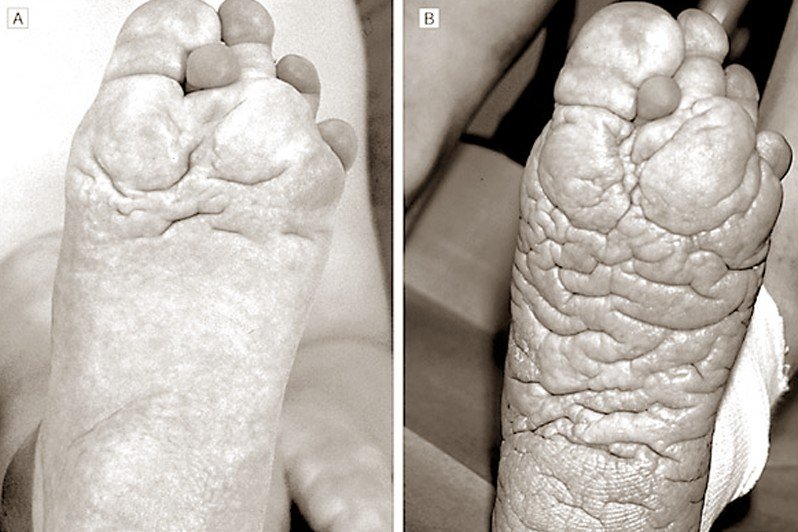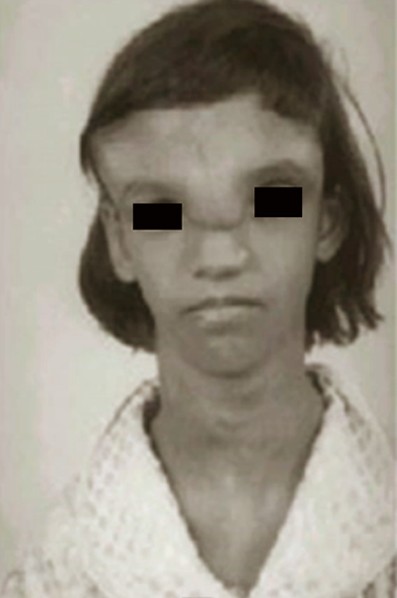Proteus Syndrome
What is Proteus Syndrome?
This is a rare medical condition that causes an abnormal growth of fatty tissue, bone, and skin. Worldwide there are approximately two hundred people alive at any given time with Proteus Syndrome but there could be more that have not been diagnosed with this rare medical condition because their symptoms are too mild. On average it occurs in less than one in a million people. One well known famous person who had Proteus Syndrome was Joseph Merrick, better known as the Elephant Man. His medical condition left him with outgrowths of skin, large tumors, and twisted gnarled bones. Each case of Proteus Syndrome is unique to the person who has it because it presents itself in a wide variety of ways.
Proteus Syndrome was first described and categorized by Doctor Michael Cohen in 1979 and was named after the Greek god Proteus. This Greek god was capable of changing his shape. This name was chosen to reflect the gradual changes a person when through who was diagnosed with Proteus Syndrome. A person who has this rare medical condition will start out normal physically and overtime will start to develop abnormally. A person will have atypical bone development, abnormal and uncontrolled skin overgrowth accompanied by the development of tumors all over the body. This rare medical condition can happen to anyone of any age, race, gender or living in any geographical location.
Proteus Syndrome Symptoms
During the initial years a person with Proteus Syndrome will experience accelerated, uncontrolled growth of masses on their body. Two of the more prominent symptoms include internal fat growths and surface/local growth of lipomas, which are growths of fat cells that are found just below your skin.
Other symptoms can include:
- Connective tissue nevi which are skin lesions that happen when the deeper layers of the skin do not develop correctly.
- Epidermal nevi which is an abnormal benign patch of skin caused by the overgrowth of skin cells.
- Thickening skin and subcutaneous and cutaneous tumors on the body
- Abnormalities of the skull
- Hemihypertrophy which is when one part of one side or one entire side of the body is larger than the other side or part of one side.
- Macrodactyly which is when a baby’s fingers or toes are abnormally large because of the overgrowth of underlying soft tissue and bone.
- Vascular disorder such as deep vein thrombosis may develop.
- Abdominal and pelvic lipomatosis and blood clotting which can be deposited in the lungs and make it a life-threatening situation for the patient.
- Cystiform pulmonary abnormalities
- Mental difficulties such as mental retardation or having a learning disability.
- Pain
- Weight gain on the side that is affected by this rare medical condition.
Proteus Syndrome Causes
The cause of Proteus Syndrome is due to the mutation in the AKT1 gene and is not genetically inherited from either parent. This particular gene is what helps to regulate cell division and growth and when a mutation occurs in the AKT1 gene the ability of a cell to regulate its own growth is hampered causing it to grow abnormally. Basically when you have increased cell division it will lead to abnormal growth characteristics. This rare medical condition is believed to be a form of genetic mosaicism.
Proteus Syndrome Diagnosis
In order to diagnosis whether a person has Proteus Syndrome the physician will do a physical examination first and then will do a biopsy of the tissues along with a blood test. They may also do medical imaging like an MRI scan, ultrasound, or CT scans to help make an accurate positive diagnosis of Proteus Syndrome. Getting an accurate diagnosis of whether a person has Proteus Syndrome or not cannot always be diagnosed by genetic testing because some of the cells in they will mutated and some will be normal.
During your doctor appointment the physician will used specific and general criteria to help make the diagnosis
General criteria
- Physical disproportion/distortion
- Sporadic occurrences
- Progressive course
General criteria is mandatory and the existence of all three of these will help to make an accurate diagnosis
Specified criteria (special clinical symptoms)
Connective tissue nevi which is a common symptom in all occurrences of Proteus Syndrome.
Also a person would need to have the identification/existence of one or combination of these symptoms:
- Regional absence of fat
- Dysregulated adipose tissue, including lipomas
- Disproportionate overgrowth of skull, vertebrae, viscera and/or limbs
- Facial phenotype
- Vascular malformations
Proteus Syndrome Treatment
At this time there is no cure for Proteus Syndrome but there are currently some medications under trial that are considered to be extremely effective in curing this rare medical condition. Most of the treatments that physicians use are symptom-based which includes reducing and soothing the problems that are associated with Proteus Syndrome. If a person has tumors they can be removed. There are also different surgical techniques that can be used to cope with the abnormal growth of skin and bone. If there is pain you can take medications to help with the pain. There are also medications that can be used to treat infections and inflammations that can happen with Proteus Syndrome.
Life expectancy
Although Proteus Syndrome is not fatal there are other conditions that are associated with this rare medical condition that can lead to a problematic life. If a person has malformation of their blood vessels it can lead to severe injuries, even death for them. How long a person who has Proteus Syndrome will live depends on how severe their case is because it can be quite carried. There are some who are only lightly affected and will be able to live a relatively normal life. Others may suffer from severe medical problems and pain because of the changes in their bodies and will live a problematic life.
Proteus Syndrome Pictures
Collection of Photos, Images and Pictures of Proteus Syndrome…

